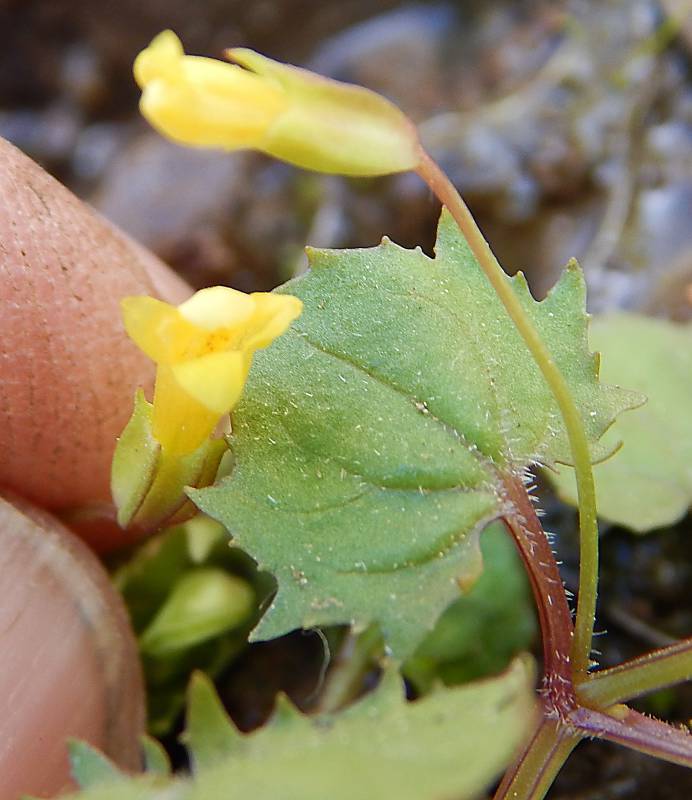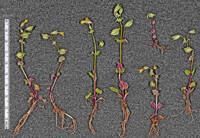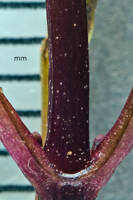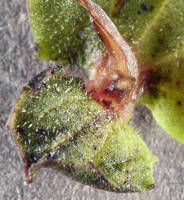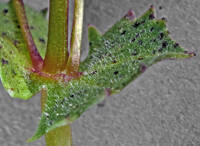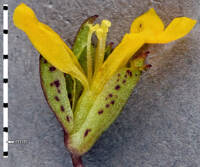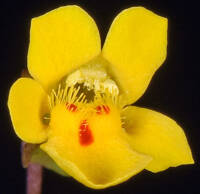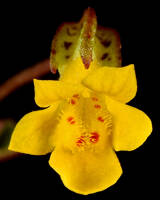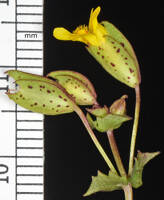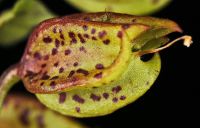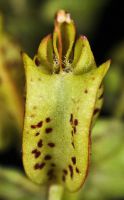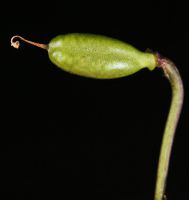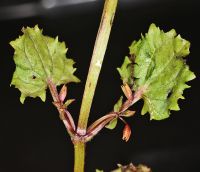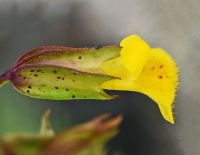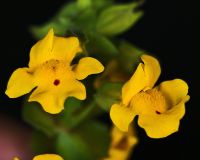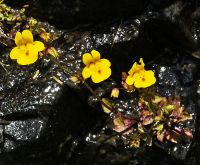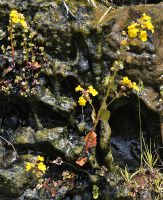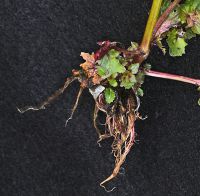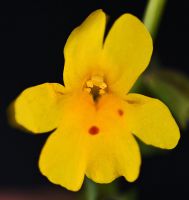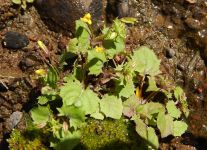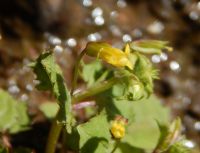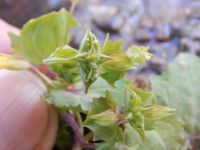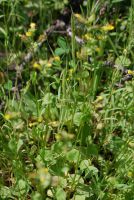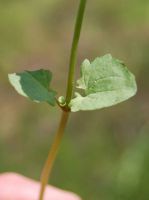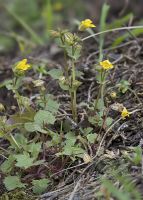Distribution: Occurring on both sides of the Cascades crest in Washington; southern British Columbia to Baja California, east to Idaho, Utah, and New Mexico.
Habitat: Rocky or moist slopes, stream banks, and seeps.
Flowers: May-July
Origin: Native
Growth Duration: Annual
Conservation Status: Not of concern
Annuals with fibrous roots or a slender taproot; stems usually 2-35 cm, erect to ascending-erect or decumbent, unbranched or branched from nodes nearest base, 4-angled or occasionally weakly 4-winged, thin and wiry or hollow, glabrous except for small villous-glandular areas directly above nodes, occasionally with minute rigid hairs distally.
Leaves basal and cauline or basal may not persist; petioles 3-35 mm from base to mid-stem with narrowly flanged bases, becoming sessile distally; blade reddish or purple-spotted beneath, somewhat ovate to nearly orbicular, approximately 10-49 mm long and 10-25 mm broad, leaves nearest base largest and persistent, palmate venation with 3-5 veins, base cuneate to truncate or nearly cordate, margins irregularly toothed or nearly lacerate, commonly doubly-toothed, 4-9 main teeth per side, sometimes sublacerate to sublyrate near base, apex acute to obtuse, surfaces glabrous or hirtellous with hairs that are dull, cylindrical, sharp-pointed, eglandular.
Axillary flowers typically 2-12, emerging from nodes at mid- to ends of stems; fruiting pedicels usually 7-20 mm, longer than subtending leaves, becoming glabrous, occasionally glandular-villous on upper surface at axils; calyx nodding at 30-180 degrees, commonly purplish or purple-spotted, ovoid-campanulate, inflated, compressed across sagittal plane, usually 10-15 mm, hirtellous or appressed-hirtellous, or glabrous, slightly short-ciliate at sinuses, throat closing, upper lobe generally longer than lower lobe, slightly sickle shaped; corollas yellow, throat commonly with red spots, lower limb usually with a red splotch at base, symmetric bilaterally, weakly bilabiate; tube-throat widely cylindric, 8-12 mm, equal to or protruding 1-2 mm beyond calyx margin, limb expanded 6-12 mm; styles slightly rough or glabrous; anthers not protruding, glabrous.
Capsules 5-9 mm, included.
Publication: Phytoneuron 2012-40: 44. 2012.
Mimulus nasutus Greene
Mimulus puncticalyx Gand.
PNW Herbaria: Specimen records of Erythranthe nasuta in the Consortium of Pacific Northwest Herbaria database.
WA Flora Checklist: Erythranthe nasuta checklist entry.
OregonFlora: Erythranthe nasuta information.
E-Flora BC: Erythranthe nasuta atlas page.
CalPhotos: Erythranthe nasuta photos.
USDA Plants: Erythranthe nasuta information.

